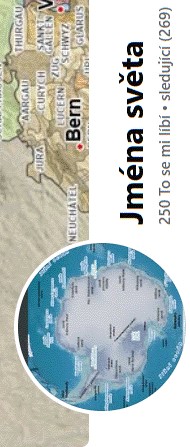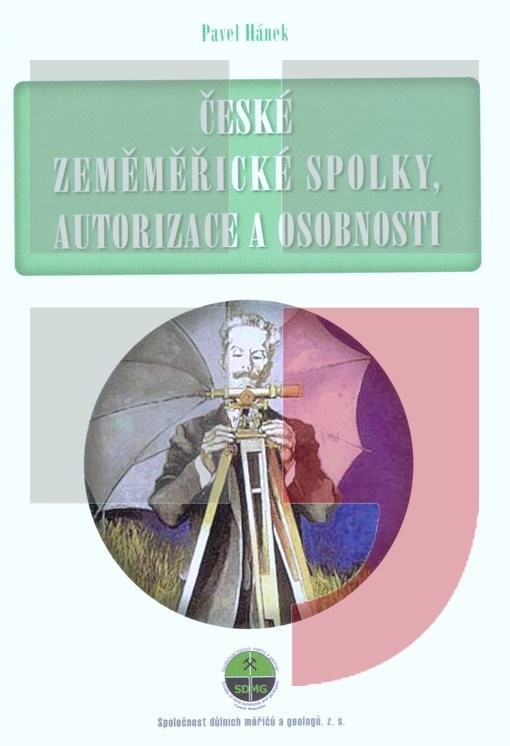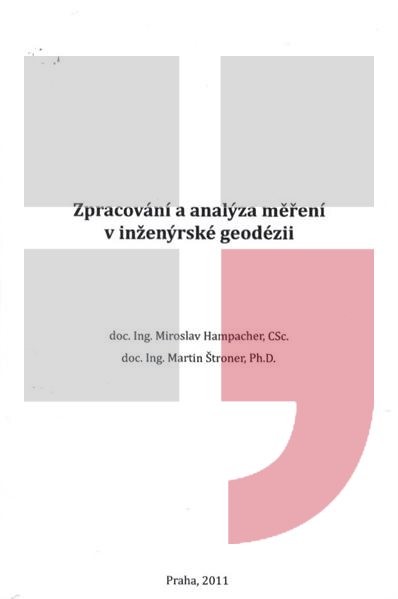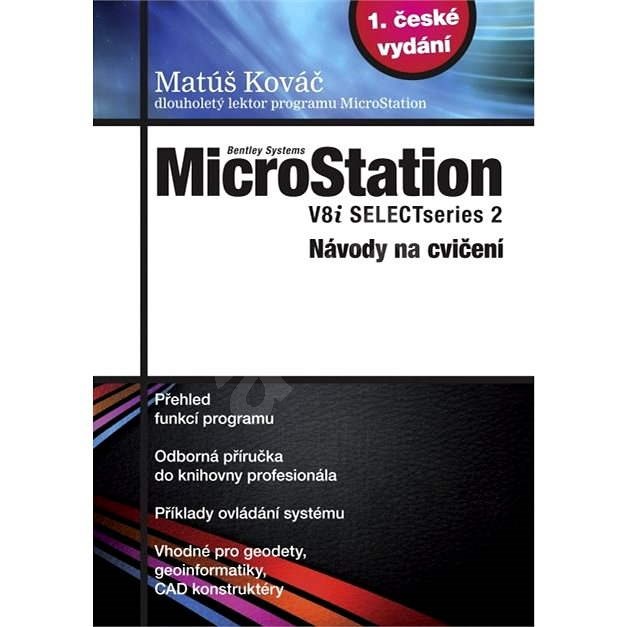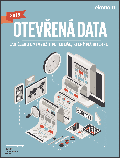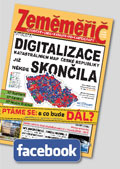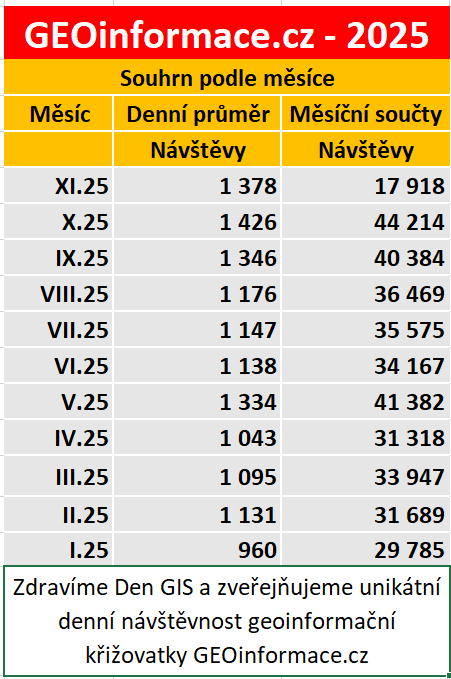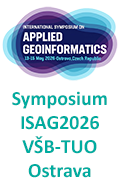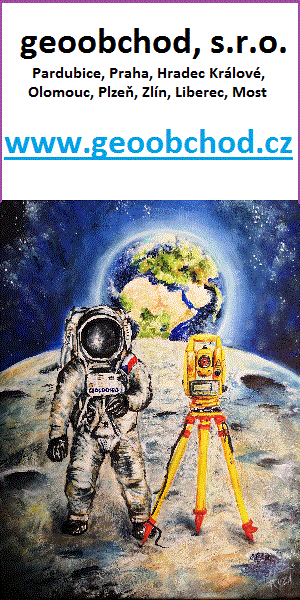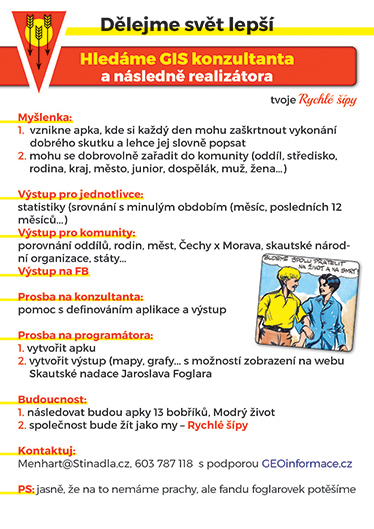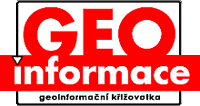zprávy
zdroje zpráv:Výroční zpráva dle zákona č. 106/1999 Sb. za rok 2022
3.1.2023 15:21 ČÚZK /Urady/Zememericke-a-katastralni-inspektoraty/Zememericke-a-katastralni-inspektoraty/Zememericky-a-katastralni-inspektorat-v-Pardubicic/Vyrocni-zpravy/Vyrocni-zprava-dle-zakona-c-106-1999-Sb-za-rok-202Výroční zpráva dle zákona č. 106/1999 Sb. za rok 2022
3.1.2023 15:21 ČÚZK - předpisy a opatření Zeměměřický a katastrální inspektorát v Pardubicíchvydává výroční zprávu úřadu za rok 2022
2022
Zveřejnění obsahu informací poskytnutých na žádost dle zákona č. 106/1999 Sb. za rok 2023
3.1.2023 14:41 ČÚZK /Urady/Katastralni-urady/Katastralni-urady/Katastralni-urad-pro-Pardubicky-kraj/Casto-hledane-informace/Poskytovani-informaci-106-1999-Sb/Zverejneni-obsahu-informaci-poskytnutych-na-za-(1)/Zverejneni-obsahu-informaci-poskytnutych-na-za-(5)Zveřejnění obsahu informací poskytnutých na žádost dle zákona č. 106/1999 Sb. za rok 2023
3.1.2023 14:41 ČÚZK - předpisy a opatření Katastrální úřad pro Pardubický krajzveřejňuje obsah informace poskytnutých na žádost dle zákona č. 106/1999 Sb. za rok 2023
2023
Rozpočet úřadu za rok 2023
3.1.2023 14:39 ČÚZK - předpisy a opatření Katastrální úřad pro Pardubický krajvystavuje rozpočet úřadu za rok 2023
2023
Rozpočet úřadu za rok 2023
3.1.2023 14:39 ČÚZK /Urady/Katastralni-urady/Katastralni-urady/Katastralni-urad-pro-Pardubicky-kraj/Rozpocet/Rozpocet-uradu-za-rok-2023Rozpočet úřadu za rok 2023
3.1.2023 14:20 ČÚZK - předpisy a opatření Katastrální úřad pro Plzeňský krajvystavuje rozpočet úřadu za rok
2023
Rozpočet úřadu za rok 2023
3.1.2023 14:20 ČÚZK /Urady/Katastralni-urady/Katastralni-urady/Katastralni-urad-pro-Plzensky-kraj/Rozpocet/Rozpocet-uradu-za-rok-2023Prodej havarovaného vozidla Škoda Roomster, RZ 9B9
3.1.2023 14:20 ČÚZK - předpisy a opatřeníKatastrální úřad pro Jihomoravský kraj nabízí nepotřebný majetek k odkupu. Jedná se o
Prodej havarovaného vozidla Škoda Roomster, RZ 9B9
Prodej havarovaného vozidla Škoda Roomster, RZ 9B9
3.1.2023 14:20 ČÚZK /Urady/Katastralni-urady/Katastralni-urady/Katastralni-urad-pro-Jihomoravsky-kraj/Nabidky-majetku/Prodej-havarovaneho-vozidla-Skoda-Roomster,-RZ-9B9Nové sestavení GEUS 27.0.2.362 - oprava exportu do VFK
3.1.2023 12:53 GEUSware Při úpravách v poslední verzi programu GEUS 27.0.1.361 se nám "povedlo" do programu zavléci chybné kódování při exportu do VFK (export je chybně proveden ve starém kódování ISO8859-2). Byla vydána opravená verze GEUS 27.0.2.362. Doporučujeme provést přeinstalaci, abyste předešli problémům s odevzdáváním GP na KP. Více informací v článku.Plánujete vzdělávání na rok 2023? Prohlédněte si naše školení
3.1.2023 11:00 ARCDATAZačátek nového roku nabízí skvělou příležitost k plánování výzev a cílů. Pokud se tedy letos chcete naučit něco nového, neváhejte se přihlásit na některé z našich školení. Kromě stálic, které vám pomůžou osvojit si práci v ArcGIS Pro (například Prostorová analýza v ArcGIS Pro), můžete vyzkoušet i školení, díky kterým zlepšíte práci s GIS v celé vaší organizaci (Sdílení geografického obsahu prostřednictvím ArcGIS Enterprise nebo Správa inženýrských sítí v ArcGIS).
Prohlédněte si celý přehled termínů na nadcházející pololetí.
Pokud máte k obsahu nebo formě školení nějaké dotazy, rádi vám je zodpovíme e-mailem na adrese skoleni@arcdata.cz nebo telefonicky na čísle 224 190 511. Budeme se těšit!
Rozpočet úřadu za rok 2023
3.1.2023 10:58 ČÚZK /Urady/Katastralni-urady/Katastralni-urady/Katastralni-urad-pro-Ustecky-kraj/Rozpocet/Rozpocet-uradu-za-rok-2023Rozpočet úřadu za rok 2023
3.1.2023 10:58 ČÚZK - předpisy a opatření Katastrální úřad pro Ústecký krajvystavuje rozpočet úřadu za rok
2023
Rozpočet úřadu za rok 2023
3.1.2023 10:28 ČÚZK /Urady/Zememericke-a-katastralni-inspektoraty/Zememericke-a-katastralni-inspektoraty/Zememericky-a-katastralni-inspektorat-v-Plzni/Rozpocet/Rozpocet-uradu-za-rok-2023Rozpočet úřadu za rok 2023
3.1.2023 10:28 ČÚZK - předpisy a opatření Zeměměřický a katastrální inspektorát v Plznivystavuje rozpočet úřadu za rok
2023
Rozpočet úřadu za rok 2022
3.1.2023 10:27 ČÚZK /Urady/Zememericke-a-katastralni-inspektoraty/Zememericke-a-katastralni-inspektoraty/Zememericky-a-katastralni-inspektorat-v-Plzni/Rozpocet/Rozpocet-uradu-za-rok-2022Rozpočet úřadu za rok 2022
3.1.2023 10:27 ČÚZK - předpisy a opatření Zeměměřický a katastrální inspektorát v Plznivystavuje rozpočet úřadu za rok
2022
Rozpočet úřadu za rok 2021
3.1.2023 10:27 ČÚZK /Urady/Zememericke-a-katastralni-inspektoraty/Zememericke-a-katastralni-inspektoraty/Zememericky-a-katastralni-inspektorat-v-Plzni/Rozpocet/Rozpocet-uradu-za-rok-2021Rozpočet úřadu za rok 2021
3.1.2023 10:27 ČÚZK - předpisy a opatření Zeměměřický a katastrální inspektorát v Plznivystavuje rozpočet úřadu za rok
2021
Lednový den s CAD/PDM expertem – bezplatná konzultace pro vaši firmu
3.1.2023 10:00 Arkance Systems27. ledna 2023 - přihlaste se na nový termín akce společnosti Arkance Systems. Těšíme se na vás.
Zpráva Lednový den s CAD/PDM expertem – bezplatná konzultace pro vaši firmu pochází z arkance-systems.cz.
Rozpočet úřadu za rok 2023
3.1.2023 9:10 ČÚZK - předpisy a opatření Katastrální úřad pro Zlínský krajvystavuje rozpočet úřadu za rok
2023
Rozpočet úřadu za rok 2023
3.1.2023 9:10 ČÚZK /Urady/Katastralni-urady/Katastralni-urady/Katastralni-urad-pro-Zlinsky-kraj/Rozpocet/Rozpocet-uradu-za-rok-2023Výroční zpráva dle zákona č. 106/1999 Sb. za rok 2022
3.1.2023 8:40 ČÚZK /Urady/Zememericke-a-katastralni-inspektoraty/Zememericke-a-katastralni-inspektoraty/Zememericky-a-katastralni-inspektorat-v-Liberci/Vyrocni-zpravy/Vyrocni-zprava-dle-zakona-c-106-1999-Sb-za-rok-202Výroční zpráva dle zákona č. 106/1999 Sb. za rok 2022
3.1.2023 8:40 ČÚZK /Urady/Zememericke-a-katastralni-inspektoraty/Zememericke-a-katastralni-inspektoraty/Zememericky-a-katastralni-inspektorat-v-Liberci/Vyrocni-zpravy/Vyrocni-zprava-dle-zakona-c-106-1999-Sb-za-rok-202Výroční zpráva dle zákona č. 106/1999 Sb. za rok 2022
3.1.2023 8:40 ČÚZK - předpisy a opatření Zeměměřický a katastrální inspektorát v Libercivydává výroční zprávu úřadu za rok
2022
Výroční zpráva dle zákona č. 106/1999 Sb. za rok 2022
3.1.2023 8:40 ČÚZK - předpisy a opatření Zeměměřický a katastrální inspektorát v Libercivydává výroční zprávu úřadu za rok
2022
Zveřejnění obsahu informací poskytnutých na žádost dle zákona č. 106/1999 Sb. za rok 2023
2.1.2023 16:27 ČÚZK /Urady/Zememericke-a-katastralni-inspektoraty/Zememericke-a-katastralni-inspektoraty/Zememericky-a-katastralni-inspektorat-v-Liberci/Casto-hledane-informace/Poskytovani-informaci-106-1999-Sb/Zverejneni-obsahu-informaci-poskytnutych-na-za-(1)/Zverejneni-obsahu-informaci-poskytnutych-na-za-(4)Zveřejnění obsahu informací poskytnutých na žádost dle zákona č. 106/1999 Sb. za rok 2023
2.1.2023 16:27 ČÚZK - předpisy a opatření Zeměměřický a katastrální inspektorát v Libercizveřejňuje obsah informace poskytnutých na žádost dle zákona č. 106/1999 Sb. za rok
2023
Archív krátkych správ 2022
2.1.2023 14:17 Komora geodetů a kartografů SRThe post Archív krátkych správ 2022 appeared first on Komora geodetov a kartografov.
Zveřejnění obsahu informací poskytnutých na žádost dle zákona č. 106/1999 Sb. za rok 2023
2.1.2023 11:51 ČÚZK - předpisy a opatření Zeměměřický a katastrální inspektorát v Pardubicíchzveřejňuje obsah informace poskytnutých na žádost dle zákona č. 106/1999 Sb. za rok
2023
Zveřejnění obsahu informací poskytnutých na žádost dle zákona č. 106/1999 Sb. za rok 2023
2.1.2023 11:51 ČÚZK /Urady/Zememericke-a-katastralni-inspektoraty/Zememericke-a-katastralni-inspektoraty/Zememericky-a-katastralni-inspektorat-v-Pardubicic/Casto-hledane-informace/Poskytovani-informaci-106-1999-Sb/Zverejneni-obsahu-informaci-poskytnutych-na-za-(1)/Zverejneni-obsahu-informaci-poskytnutych-na-za-(4)PF 2023 – UAVA
2.1.2023 11:45 UAVARádi bychom Vám popřáli hodně úspěchů a hlavně hodně zdraví v novém roce 2023 a budeme se těšit na další spolupráci a budeme rádi za Vaše členství i sledování Aliance pro bezpilotní letecký průmysl. Opět u nás najdete všechny nejaktuálnější novinky v oblasti dronů nejen v ČR, ale i ve světě, chystáme další partnerství mezinárodních […]
The post PF 2023 – UAVA appeared first on UAV Aliance pro bezpilotní letecký průmysl.
Rozpočet úřadu za rok 2023
2.1.2023 10:27 ČÚZK - předpisy a opatření Katastrální úřad pro hlavní město Prahuvystavuje rozpočet úřadu za rok
2023
Rozpočet úřadu za rok 2023
2.1.2023 10:27 ČÚZK /Urady/Katastralni-urady/Katastralni-urady/Katastralni-urad-pro-hlavni-mesto-Prahu/Rozpocet/Rozpocet-uradu-za-rok-2023Výroční zpráva dle zákona č. 106/1999 Sb. za rok 2022
2.1.2023 9:11 ČÚZK /Urady/Zememericky-urad/Zpravy-ZU/Vyrocni-zprava-ZU-dle-zakona-c-106-1999-Sb/Vyrocni-zprava-dle-zakona-c-106-1999-Sb-za-rok-202Výroční zpráva dle zákona č. 106/1999 Sb. za rok 2022
2.1.2023 9:11 Zeměměřický úřad Zeměměřický úřadvydává výroční zprávu úřadu za rok
2022
Výroční zpráva dle zákona č. 106/1999 Sb. za rok 2022
2.1.2023 9:11 ČÚZK - předpisy a opatření Zeměměřický úřadvydává výroční zprávu úřadu za rok
2022
APGEO - VISIONPLAN 3D novým kmenovým členem APG
1.1.2023 1:00 Asociace podnikatelů v geomatice Novým kmenovým členem se stala společnost VISIONPLAN 3D.Video o BIM od Asociace podnikatelů v geomatice
30.12.2022 12:03 Hrdlička Chceme-li bydlet v chytrých městech, měli bychom je umět chytře stavětobsazení služebního místa - vedení katastrální mapy
29.12.2022 10:47 ČÚZK /Urady/Katastralni-urady/Katastralni-urady/Katastralni-urad-pro-Olomoucky-kraj/Volna-mista/DMS/obsazeni-sluzebniho-mista-vedeni-katastralni-mapyobsazení služebního místa - vedení katastrální mapy
29.12.2022 10:47 ČÚZK - volná místa Katastrální úřad pro Olomoucký kraj Katastrální pracoviště Šumperk vypisuje výběrové řízení na místo obsazení služebního místa - vedení katastrální mapyobsazení služebního místa - vedení katastrální mapy
29.12.2022 10:47 ČÚZK - předpisy a opatření Katastrální úřad pro Olomoucký kraj Katastrální pracoviště Šumperkvypisuje výběrové řízení na místo
obsazení služebního místa - vedení katastrální mapy
Upozornění
29.12.2022 9:27 ČÚZK - předpisy a opatření Katastrální úřad pro Zlínský kraj zveřejnil novou aktualitu:Upozornění
29.12.2022 9:27 ČÚZK /Urady/Katastralni-urady/Katastralni-urady/Katastralni-urad-pro-Zlinsky-kraj/O-uradu/Aktuality/Upozorneni20221228-Metodická pomůcka
28.12.2022 14:40 ČÚZK /Zememerictvi/Zememericke-cinnosti/Aktuality-pro-zememerice/20221228-Metodicka-pomucka20221228-Metodická pomůcka
28.12.2022 14:40 ČÚZK - RSS kanál pro zeměměřiče Metodická pomůcka „Vzory geometrických plánů“.20221228-Metodická pomůcka
28.12.2022 14:40 ČÚZK - předpisy a opatření Český úřad zeměměřický a katastrální zveřejnil novou aktualitu: Metodická pomůcka „Vzory geometrických plánů“.vrchní referent/rada – obnova katastrálního operátu na Katastrálním pracovišti Karviná Katastrální
28.12.2022 9:05 ČÚZK /Urady/Katastralni-urady/Katastralni-urady/Katastralni-urad-pro-Moravskoslezsky-kraj/Uredni-deska/Oznameni-a-jina-uredni-sdeleni/Volna-mista/DMS/vrchni-referent-rada-–-obnova-katastralniho-op-(5)vrchní referent/rada – obnova katastrálního operátu na Katastrálním pracovišti Karviná Katastrálního
28.12.2022 9:05 ČÚZK /Urady/Katastralni-urady/Katastralni-urady/Katastralni-urad-pro-Moravskoslezsky-kraj/Uredni-deska/Oznameni-a-jina-uredni-sdeleni/Volna-mista/DMS/vrchni-referent-rada-–-obnova-katastralniho-op-(5)vrchní referent/rada – obnova katastrálního operátu na Katastrálním pracovišti Karviná Katastrální
28.12.2022 9:05 ČÚZK - předpisy a opatření Katastrální úřad pro Moravskoslezský kraj - Katastrální pracoviště Karvinávypisuje výběrové řízení na místo
vrchní referent/rada – obnova katastrálního operátu na Katastrálním pracovišti Karviná Katastrálního úřadu pro Moravskoslezský kraj
vrchní referent/rada – obnova katastrálního operátu na Katastrálním pracovišti Karviná Katastrálního
28.12.2022 9:05 ČÚZK - předpisy a opatření Katastrální úřad pro Moravskoslezský kraj - Katastrální pracoviště Karvinávypisuje výběrové řízení na místo
vrchní referent/rada – obnova katastrálního operátu na Katastrálním pracovišti Karviná Katastrálního úřadu pro Moravskoslezský kraj
vrchní referent/rada – obnova katastrálního operátu na Katastrálním pracovišti Karviná Katastrálního
28.12.2022 9:05 ČÚZK - volná místa Katastrální úřad pro Moravskoslezský kraj - Katastrální pracoviště Karviná vypisuje výběrové řízení na místo vrchní referent/rada – obnova katastrálního operátu na Katastrálním pracovišti Karviná Katastrálníhovrchní referent/rada – obnova katastrálního operátu na Katastrálním pracovišti Třinec Katastrálního
28.12.2022 9:03 ČÚZK - volná místa Katastrální úřad pro Moravskoslezský kraj - Katastrální pracoviště Třinec vypisuje výběrové řízení na místo vrchní referent/rada – obnova katastrálního operátu na Katastrálním pracovišti Třinec Katastrálníhovrchní referent/rada – obnova katastrálního operátu na Katastrálním pracovišti Třinec Katastrálního
28.12.2022 9:03 ČÚZK /Urady/Katastralni-urady/Katastralni-urady/Katastralni-urad-pro-Moravskoslezsky-kraj/Uredni-deska/Oznameni-a-jina-uredni-sdeleni/Volna-mista/DMS/vrchni-referent-rada-–-obnova-katastralniho-op-(4)vrchní referent/rada – obnova katastrálního operátu na Katastrálním pracovišti Třinec Katastrálního
28.12.2022 9:03 ČÚZK - předpisy a opatření Katastrální úřad pro Moravskoslezský kraj - Katastrální pracoviště Třinecvypisuje výběrové řízení na místo
vrchní referent/rada – obnova katastrálního operátu na Katastrálním pracovišti Třinec Katastrálního úřadu pro Moravskoslezský kraj
odborný referent/vrchní referent – obnova katastrálního operátu na Katastrálním pracovišti Třinec Ka
28.12.2022 9:02 ČÚZK - volná místa Katastrální úřad pro Moravskoslezský kraj - Katastrální pracoviště Třinec vypisuje výběrové řízení na místo odborný referent/vrchní referent – obnova katastrálního operátu na Katastrálním pracovišti Třinec Kaodborný referent/vrchní referent – obnova katastrálního operátu na Katastrálním pracovišti Třinec Ka
28.12.2022 9:02 ČÚZK - předpisy a opatření Katastrální úřad pro Moravskoslezský kraj - Katastrální pracoviště Třinecvypisuje výběrové řízení na místo
odborný referent/vrchní referent – obnova katastrálního operátu na Katastrálním pracovišti Třinec Katastrálního úřadu pro Moravskoslezský kraj
odborný referent/vrchní referent – obnova katastrálního operátu na Katastrálním pracovišti Třinec Ka
28.12.2022 9:02 ČÚZK /Urady/Katastralni-urady/Katastralni-urady/Katastralni-urad-pro-Moravskoslezsky-kraj/Uredni-deska/Oznameni-a-jina-uredni-sdeleni/Volna-mista/DMS/odborny-referent-vrchni-referent-–-obnova-kata-(1)vrchní referent/rada – obnova katastrálního operátu na Katastrálním pracovišti Ostrava Katastrálního
28.12.2022 9:01 ČÚZK /Urady/Katastralni-urady/Katastralni-urady/Katastralni-urad-pro-Moravskoslezsky-kraj/Uredni-deska/Oznameni-a-jina-uredni-sdeleni/Volna-mista/DMS/vrchni-referent-rada-–-obnova-katastralniho-op-(3)vrchní referent/rada – obnova katastrálního operátu na Katastrálním pracovišti Ostrava Katastrálníh
28.12.2022 9:01 ČÚZK - předpisy a opatření Katastrální úřad pro Moravskoslezský kraj Katastrální pracoviště Ostravavypisuje výběrové řízení na místo
vrchní referent/rada – obnova katastrálního operátu na Katastrálním pracovišti Ostrava Katastrálního úřadu pro Moravskoslezský kraj
vrchní referent/rada – obnova katastrálního operátu na Katastrálním pracovišti Ostrava Katastrálníh
28.12.2022 9:01 ČÚZK /Urady/Katastralni-urady/Katastralni-urady/Katastralni-urad-pro-Moravskoslezsky-kraj/Uredni-deska/Oznameni-a-jina-uredni-sdeleni/Volna-mista/DMS/vrchni-referent-rada-–-obnova-katastralniho-op-(3)vrchní referent/rada – obnova katastrálního operátu na Katastrálním pracovišti Ostrava Katastrálního
28.12.2022 9:01 ČÚZK - předpisy a opatření Katastrální úřad pro Moravskoslezský kraj - Katastrální pracoviště Ostravavypisuje výběrové řízení na místo
vrchní referent/rada – obnova katastrálního operátu na Katastrálním pracovišti Ostrava Katastrálního úřadu pro Moravskoslezský kraj
vrchní referent/rada – obnova katastrálního operátu na Katastrálním pracovišti Ostrava Katastrálního
28.12.2022 9:01 ČÚZK - volná místa Katastrální úřad pro Moravskoslezský kraj - Katastrální pracoviště Ostrava vypisuje výběrové řízení na místo vrchní referent/rada – obnova katastrálního operátu na Katastrálním pracovišti Ostrava Katastrálníhovrchní referent/rada – obnova katastrálního operátu na Katastrálním pracovišti Ostrava Katastrálníh
28.12.2022 9:01 ČÚZK - volná místa Katastrální úřad pro Moravskoslezský kraj Katastrální pracoviště Ostrava vypisuje výběrové řízení na místo vrchní referent/rada – obnova katastrálního operátu na Katastrálním pracovišti Ostrava Katastrálníhvrchní referent/rada – kontrola aktualizace na Katastrálním pracovišti Ostrava Katastrálního úřadu p
28.12.2022 9:00 ČÚZK - volná místa Katastrální úřad pro Moravskoslezský kraj - Katastrální pracoviště Ostrava vypisuje výběrové řízení na místo vrchní referent/rada – kontrola aktualizace na Katastrálním pracovišti Ostrava Katastrálního úřadu pvrchní referent/rada – kontrola aktualizace na Katastrálním pracovišti Ostrava Katastrálního úřadu p
28.12.2022 9:00 ČÚZK - předpisy a opatření Katastrální úřad pro Moravskoslezský kraj - Katastrální pracoviště Ostravavypisuje výběrové řízení na místo
vrchní referent/rada – kontrola aktualizace na Katastrálním pracovišti Ostrava Katastrálního úřadu pro Moravskoslezský kraj
vrchní referent/rada – kontrola aktualizace na Katastrálním pracovišti Ostrava Katastrálního úřadu
28.12.2022 9:00 ČÚZK - předpisy a opatření Katastrální úřad pro Moravskoslezský kraj - Katastrální pracoviště Ostravavypisuje výběrové řízení na místo
vrchní referent/rada – kontrola aktualizace na Katastrálním pracovišti Ostrava Katastrálního úřadu pro Moravskoslezský kraj
vrchní referent/rada – kontrola aktualizace na Katastrálním pracovišti Ostrava Katastrálního úřadu
28.12.2022 9:00 ČÚZK /Urady/Katastralni-urady/Katastralni-urady/Katastralni-urad-pro-Moravskoslezsky-kraj/Uredni-deska/Oznameni-a-jina-uredni-sdeleni/Volna-mista/DMS/vrchni-referent-rada-–-kontrola-aktualizace-na-Katvrchní referent/rada – kontrola aktualizace na Katastrálním pracovišti Ostrava Katastrálního úřadu
28.12.2022 9:00 ČÚZK - volná místa Katastrální úřad pro Moravskoslezský kraj Katastrální pracoviště Ostrava vypisuje výběrové řízení na místo vrchní referent/rada – kontrola aktualizace na Katastrálním pracovišti Ostrava Katastrálního úřaduvrchní referent/rada – kontrola aktualizace na Katastrálním pracovišti Ostrava Katastrálního úřadu p
28.12.2022 9:00 ČÚZK /Urady/Katastralni-urady/Katastralni-urady/Katastralni-urad-pro-Moravskoslezsky-kraj/Uredni-deska/Oznameni-a-jina-uredni-sdeleni/Volna-mista/DMS/vrchni-referent-rada-–-kontrola-aktualizace-na-Katrada/odborný rada – rozhodování o povolení vkladu na Katastrálním pracovišti Opava Katastrálního úřa
28.12.2022 8:59 ČÚZK /Urady/Katastralni-urady/Katastralni-urady/Katastralni-urad-pro-Moravskoslezsky-kraj/Uredni-deska/Oznameni-a-jina-uredni-sdeleni/Volna-mista/DMS/rada-odborny-rada-–-rozhodovani-o-povoleni-vkladurada/odborný rada – rozhodování o povolení vkladu na Katastrálním pracovišti Opava Katastrálního úřa
28.12.2022 8:59 ČÚZK - volná místa Katastrální úřad pro Moravskoslezský kraj - Katastrální pracoviště Opava vypisuje výběrové řízení na místo rada/odborný rada – rozhodování o povolení vkladu na Katastrálním pracovišti Opava Katastrálního úřarada/odborný rada – rozhodování o povolení vkladu na Katastrálním pracovišti Opava Katastrálního ú
28.12.2022 8:59 ČÚZK - volná místa Katastrální úřad pro Moravskoslezský kraj Katastrální pracoviště Opava vypisuje výběrové řízení na místo rada/odborný rada – rozhodování o povolení vkladu na Katastrálním pracovišti Opava Katastrálního úrada/odborný rada – rozhodování o povolení vkladu na Katastrálním pracovišti Opava Katastrálního úřa
28.12.2022 8:59 ČÚZK - předpisy a opatření Katastrální úřad pro Moravskoslezský kraj - Katastrální pracoviště Opavavypisuje výběrové řízení na místo
rada/odborný rada – rozhodování o povolení vkladu na Katastrálním pracovišti Opava Katastrálního úřadu pro Moravskoslezský kraj
odborný referent/vrchní referent – vedení katastrální mapy na Katastrálním pracovišti Frýdek-Místek
28.12.2022 8:46 ČÚZK - předpisy a opatření Katastrální úřad pro Moravskoslezský kraj - Katastrální pracoviště Frýdek-Místekvypisuje výběrové řízení na místo
odborný referent/vrchní referent – vedení katastrální mapy na Katastrálním pracovišti Frýdek-Místek Katastrálního úřadu pro Moravskoslezský kraj
odborný referent/vrchní referent – vedení katastrální mapy na Katastrálním pracovišti Frýdek-Místek
28.12.2022 8:46 ČÚZK - volná místa Katastrální úřad pro Moravskoslezský kraj - Katastrální pracoviště Frýdek-Místek vypisuje výběrové řízení na místo odborný referent/vrchní referent – vedení katastrální mapy na Katastrálním pracovišti Frýdek-Místekodborný referent/vrchní referent – vedení katastrální mapy na Katastrálním pracovišti Frýdek-Místek
28.12.2022 8:46 ČÚZK /Urady/Katastralni-urady/Katastralni-urady/Katastralni-urad-pro-Moravskoslezsky-kraj/Uredni-deska/Oznameni-a-jina-uredni-sdeleni/Volna-mista/DMS/odborny-referent-vrchni-referent-–-vedeni-katastraodborný referent/vrchní referent – vedení katastrální mapy na Katastrálním pracovišti Frýdek-Místek
28.12.2022 8:46 ČÚZK - předpisy a opatření Katastrální úřad pro Moravskoslezský kraj Katastrální pracoviště Frýdek-Místekvypisuje výběrové řízení na místo
odborný referent/vrchní referent – vedení katastrální mapy na Katastrálním pracovišti Frýdek-Místek Katastrálního úřadu pro Moravskoslezský kraj
odborný referent/vrchní referent – vedení katastrální mapy na Katastrálním pracovišti Frýdek-Místek
28.12.2022 8:46 ČÚZK - předpisy a opatření Katastrální úřad pro Moravskoslezský kraj - Katastrální pracoviště Frýdek-Místekvypisuje výběrové řízení na místo
odborný referent/vrchní referent – vedení katastrální mapy na Katastrálním pracovišti Frýdek-Místek Katastrálního úřadu pro Moravskoslezský kraj
odborný referent/vrchní referent – vedení katastrální mapy na Katastrálním pracovišti Frýdek-Místek
28.12.2022 8:46 ČÚZK /Urady/Katastralni-urady/Katastralni-urady/Katastralni-urad-pro-Moravskoslezsky-kraj/Uredni-deska/Oznameni-a-jina-uredni-sdeleni/Volna-mista/DMS/odborny-referent-vrchni-referent-–-vedeni-katastraodborný referent/vrchní referent – vedení katastrální mapy na Katastrálním pracovišti Frýdek-Místek
28.12.2022 8:46 ČÚZK - volná místa Katastrální úřad pro Moravskoslezský kraj - Katastrální pracoviště Frýdek-Místek vypisuje výběrové řízení na místo odborný referent/vrchní referent – vedení katastrální mapy na Katastrálním pracovišti Frýdek-Místekodborný referent/vrchní referent – vedení katastrální mapy na Katastrálním pracovišti Frýdek-Místek
28.12.2022 8:46 ČÚZK - volná místa Katastrální úřad pro Moravskoslezský kraj Katastrální pracoviště Frýdek-Místek vypisuje výběrové řízení na místo odborný referent/vrchní referent – vedení katastrální mapy na Katastrálním pracovišti Frýdek-Místekvrchní referent/rada – obnova katastrálního operátu na Ka
28.12.2022 8:45 ČÚZK /Urady/Katastralni-urady/Katastralni-urady/Katastralni-urad-pro-Moravskoslezsky-kraj/Uredni-deska/Oznameni-a-jina-uredni-sdeleni/Volna-mista/DMS/vrchni-referent-rada-–-obnova-katastralniho-op-(2)vrchní referent/rada – obnova katastrálního operátu na Ka
28.12.2022 8:45 ČÚZK - předpisy a opatření Katastrální úřad pro Moravskoslezský kraj - Katastrální pracoviště Frýdek-Místekvypisuje výběrové řízení na místo
vrchní referent/rada – obnova katastrálního operátu na Katastrálním pracovišti Frýdek-Místek Katastrálního úřadu pro Moravskoslezský kraj
vrchní referent/rada – obnova katastrálního operátu na Katastrálním pracovišti Frýdek-Místek Katastr
28.12.2022 8:45 ČÚZK /Urady/Katastralni-urady/Katastralni-urady/Katastralni-urad-pro-Moravskoslezsky-kraj/Uredni-deska/Oznameni-a-jina-uredni-sdeleni/Volna-mista/DMS/vrchni-referent-rada-–-obnova-katastralniho-op-(2)vrchní referent/rada – obnova katastrálního operátu na Ka
28.12.2022 8:45 ČÚZK - volná místa Katastrální úřad pro Moravskoslezský kraj Katastrální pracoviště Frýdek-Místek vypisuje výběrové řízení na místo vrchní referent/rada – obnova katastrálního operátu na Kavrchní referent/rada – obnova katastrálního operátu na Katastrálním pracovišti Frýdek-Místek Katastr
28.12.2022 8:45 ČÚZK - předpisy a opatření Katastrální úřad pro Moravskoslezský kraj - Katastrální pracoviště Frýdek-Místekvypisuje výběrové řízení na místo
vrchní referent/rada – obnova katastrálního operátu na Katastrálním pracovišti Frýdek-Místek Katastrálního úřadu pro Moravskoslezský kraj
vrchní referent/rada – obnova katastrálního operátu na Katastrálním pracovišti Frýdek-Místek Katastr
28.12.2022 8:45 ČÚZK - volná místa Katastrální úřad pro Moravskoslezský kraj - Katastrální pracoviště Frýdek-Místek vypisuje výběrové řízení na místo vrchní referent/rada – obnova katastrálního operátu na Katastrálním pracovišti Frýdek-Místek Katastrrada/odborný rada – řízení o opravě chyby v SPI na Katast
28.12.2022 8:43 ČÚZK - volná místa Katastrální úřad pro Moravskoslezský kraj Katastrální pracoviště Frýdek-Místek vypisuje výběrové řízení na místo rada/odborný rada – řízení o opravě chyby v SPI na Katastrada/odborný rada – řízení o opravě chyby v SPI na Katastrálním pracovišti Frýdek-Místek Katastrální
28.12.2022 8:43 ČÚZK - volná místa Katastrální úřad pro Moravskoslezský kraj - Katastrální pracoviště Frýdek-Místek vypisuje výběrové řízení na místo rada/odborný rada – řízení o opravě chyby v SPI na Katastrálním pracovišti Frýdek-Místek Katastrálnírada/odborný rada – řízení o opravě chyby v SPI na Katastrálním pracovišti Frýdek-Místek Katastrální
28.12.2022 8:43 ČÚZK - předpisy a opatření Katastrální úřad pro Moravskoslezský kraj - Katastrální pracoviště Frýdek-Místekvypisuje výběrové řízení na místo
rada/odborný rada – řízení o opravě chyby v SPI na Katastrálním pracovišti Frýdek-Místek Katastrálního úřadu pro Moravskoslezský kraj
rada/odborný rada – řízení o opravě chyby v SPI na Katast
28.12.2022 8:43 ČÚZK - předpisy a opatření Katastrální úřad pro Moravskoslezský kraj - Katastrální pracoviště Frýdek-Místekvypisuje výběrové řízení na místo
rada/odborný rada – řízení o opravě chyby v SPI na Katastrálním pracovišti Frýdek-Místek Katastrálního úřadu pro Moravskoslezský kraj
rada/odborný rada – řízení o opravě chyby v SPI na Katastrálním pracovišti Frýdek-Místek Katastrální
28.12.2022 8:43 ČÚZK /Urady/Katastralni-urady/Katastralni-urady/Katastralni-urad-pro-Moravskoslezsky-kraj/Uredni-deska/Oznameni-a-jina-uredni-sdeleni/Volna-mista/DMS/rada-odborny-rada-–-rizeni-o-oprave-chyby-v-SPI-narada/odborný rada – řízení o opravě chyby v SPI na Katast
28.12.2022 8:43 ČÚZK /Urady/Katastralni-urady/Katastralni-urady/Katastralni-urad-pro-Moravskoslezsky-kraj/Uredni-deska/Oznameni-a-jina-uredni-sdeleni/Volna-mista/DMS/rada-odborny-rada-–-rizeni-o-oprave-chyby-v-SPI-navrchní referent/rada – vedení katastrální mapy na Katastrálním pracovišti Frýdek-Místek Katastrálníh
28.12.2022 8:42 ČÚZK - předpisy a opatření Katastrální úřad pro Moravskoslezský kraj - Katastrální pracoviště Frýdek-Místekvypisuje výběrové řízení na místo
vrchní referent/rada – vedení katastrální mapy na Katastrálním pracovišti Frýdek-Místek Katastrálního úřadu pro Moravskoslezský kraj
vrchní referent/rada – vedení katastrální mapy na Katastrálním pracovišti Frýdek-Místek Katastráln
28.12.2022 8:42 ČÚZK /Urady/Katastralni-urady/Katastralni-urady/Katastralni-urad-pro-Moravskoslezsky-kraj/Uredni-deska/Oznameni-a-jina-uredni-sdeleni/Volna-mista/DMS/vrchni-referent-rada-–-vedeni-katastralni-mapy-navrchní referent/rada – vedení katastrální mapy na Katastrálním pracovišti Frýdek-Místek Katastráln
28.12.2022 8:42 ČÚZK - předpisy a opatření Katastrální úřad pro Moravskoslezský kraj - Katastrální pracoviště Frýdek-Místekvypisuje výběrové řízení na místo
vrchní referent/rada – vedení katastrální mapy na Katastrálním pracovišti Frýdek-Místek Katastrálního úřadu pro Moravskoslezský kraj
vrchní referent/rada – vedení katastrální mapy na Katastrálním pracovišti Frýdek-Místek Katastrálníh
28.12.2022 8:42 ČÚZK - volná místa Katastrální úřad pro Moravskoslezský kraj - Katastrální pracoviště Frýdek-Místek vypisuje výběrové řízení na místo vrchní referent/rada – vedení katastrální mapy na Katastrálním pracovišti Frýdek-Místek Katastrálníhvrchní referent/rada – vedení katastrální mapy na Katastrálním pracovišti Frýdek-Místek Katastráln
28.12.2022 8:42 ČÚZK - předpisy a opatření Katastrální úřad pro Moravskoslezský kraj Katastrální pracoviště Frýdek-Místekvypisuje výběrové řízení na místo
vrchní referent/rada – vedení katastrální mapy na Katastrálním pracovišti Frýdek-Místek Katastrálního úřadu pro Moravskoslezský kraj
vrchní referent/rada – vedení katastrální mapy na Katastrálním pracovišti Frýdek-Místek Katastráln
28.12.2022 8:42 ČÚZK - volná místa Katastrální úřad pro Moravskoslezský kraj Katastrální pracoviště Frýdek-Místek vypisuje výběrové řízení na místo vrchní referent/rada – vedení katastrální mapy na Katastrálním pracovišti Frýdek-Místek Katastrálnvrchní referent/rada – vedení katastrální mapy na Katastrálním pracovišti Frýdek-Místek Katastrálníh
28.12.2022 8:42 ČÚZK /Urady/Katastralni-urady/Katastralni-urady/Katastralni-urad-pro-Moravskoslezsky-kraj/Uredni-deska/Oznameni-a-jina-uredni-sdeleni/Volna-mista/DMS/vrchni-referent-rada-–-vedeni-katastralni-mapy-navrchní referent/rada – vedení katastrální mapy na Katastrálním pracovišti Frýdek-Místek Katastráln
28.12.2022 8:42 ČÚZK /Urady/Katastralni-urady/Katastralni-urady/Katastralni-urad-pro-Moravskoslezsky-kraj/Uredni-deska/Oznameni-a-jina-uredni-sdeleni/Volna-mista/DMS/vrchni-referent-rada-–-vedeni-katastralni-mapy-na-vrchní referent/rada – vedení katastrální mapy na Katastrálním pracovišti Frýdek-Místek Katastráln
28.12.2022 8:42 ČÚZK - volná místa Katastrální úřad pro Moravskoslezský kraj - Katastrální pracoviště Frýdek-Místek vypisuje výběrové řízení na místo vrchní referent/rada – vedení katastrální mapy na Katastrálním pracovišti Frýdek-Místek Katastrálnodborný referent – obnova katastrálního operátu na Katastrálním pracovišti Bruntál Katastrálního úřa
28.12.2022 8:41 ČÚZK - volná místa Katastrální úřad pro Moravskoslezský kraj - Katastrální pracoviště Bruntál vypisuje výběrové řízení na místo odborný referent – obnova katastrálního operátu na Katastrálním pracovišti Bruntál Katastrálního úřaodborný referent – obnova katastrálního operátu na Katastrálním pracovišti Bruntál Katastrálního úř
28.12.2022 8:41 ČÚZK - předpisy a opatření Katastrální úřad pro Moravskoslezský kraj Katastrální pracoviště Bruntálvypisuje výběrové řízení na místo
odborný referent – obnova katastrálního operátu na Katastrálním pracovišti Bruntál Katastrálního úřadu pro Moravskoslezský kraj
odborný referent – obnova katastrálního operátu na Katastrálním pracovišti Bruntál Katastrálního úř
28.12.2022 8:41 ČÚZK - předpisy a opatření Katastrální úřad pro Moravskoslezský kraj - Katastrální pracoviště Bruntálvypisuje výběrové řízení na místo
odborný referent – obnova katastrálního operátu na Katastrálním pracovišti Bruntál Katastrálního úřadu pro Moravskoslezský kraj
odborný referent – obnova katastrálního operátu na Katastrálním pracovišti Bruntál Katastrálního úřa
28.12.2022 8:41 ČÚZK /Urady/Katastralni-urady/Katastralni-urady/Katastralni-urad-pro-Moravskoslezsky-kraj/Uredni-deska/Oznameni-a-jina-uredni-sdeleni/Volna-mista/DMS/odborny-referent-–-obnova-katastralniho-operatu-naodborný referent – obnova katastrálního operátu na Katastrálním pracovišti Bruntál Katastrálního úřa
28.12.2022 8:41 ČÚZK - předpisy a opatření Katastrální úřad pro Moravskoslezský kraj - Katastrální pracoviště Bruntálvypisuje výběrové řízení na místo
odborný referent – obnova katastrálního operátu na Katastrálním pracovišti Bruntál Katastrálního úřadu pro Moravskoslezský kraj
odborný referent – obnova katastrálního operátu na Katastrálním pracovišti Bruntál Katastrálního úř
28.12.2022 8:41 ČÚZK /Urady/Katastralni-urady/Katastralni-urady/Katastralni-urad-pro-Moravskoslezsky-kraj/Uredni-deska/Oznameni-a-jina-uredni-sdeleni/Volna-mista/DMS/odborny-referent-–-obnova-katastralniho-operatu-naodborný referent – obnova katastrálního operátu na Katastrálním pracovišti Bruntál Katastrálního úř
28.12.2022 8:41 ČÚZK - volná místa Katastrální úřad pro Moravskoslezský kraj - Katastrální pracoviště Bruntál vypisuje výběrové řízení na místo odborný referent – obnova katastrálního operátu na Katastrálním pracovišti Bruntál Katastrálního úřodborný referent – obnova katastrálního operátu na Katastrálním pracovišti Bruntál Katastrálního úř
28.12.2022 8:41 ČÚZK - volná místa Katastrální úřad pro Moravskoslezský kraj Katastrální pracoviště Bruntál vypisuje výběrové řízení na místo odborný referent – obnova katastrálního operátu na Katastrálním pracovišti Bruntál Katastrálního úřvrchní referent/rada – obnova katastrálního operátu na Katastrálním pracovišti Bruntál Katastrálníh
28.12.2022 8:39 ČÚZK - volná místa Katastrální úřad pro Moravskoslezský kraj Katastrální pracoviště Bruntál vypisuje výběrové řízení na místo vrchní referent/rada – obnova katastrálního operátu na Katastrálním pracovišti Bruntál Katastrálníhvrchní referent/rada – obnova katastrálního operátu na Katastrálním pracovišti Bruntál Katastrálníh
28.12.2022 8:39 ČÚZK - předpisy a opatření Katastrální úřad pro Moravskoslezský kraj - Katastrální pracoviště Bruntálvypisuje výběrové řízení na místo
vrchní referent/rada – obnova katastrálního operátu na Katastrálním pracovišti Bruntál Katastrálního úřadu pro Moravskoslezský kraj
vrchní referent/rada – obnova katastrálního operátu na Katastrálním pracovišti Bruntál Katastrálníh
28.12.2022 8:39 ČÚZK - předpisy a opatření Katastrální úřad pro Moravskoslezský kraj Katastrální pracoviště Bruntálvypisuje výběrové řízení na místo
vrchní referent/rada – obnova katastrálního operátu na Katastrálním pracovišti Bruntál Katastrálního úřadu pro Moravskoslezský kraj
vrchní referent/rada – obnova katastrálního operátu na Katastrálním pracovišti Bruntál Katastrálního
28.12.2022 8:39 ČÚZK /Urady/Katastralni-urady/Katastralni-urady/Katastralni-urad-pro-Moravskoslezsky-kraj/Uredni-deska/Oznameni-a-jina-uredni-sdeleni/Volna-mista/DMS/vrchni-referent-rada-–-obnova-katastralniho-op-(1)vrchní referent/rada – obnova katastrálního operátu na Katastrálním pracovišti Bruntál Katastrálníh
28.12.2022 8:39 ČÚZK - volná místa Katastrální úřad pro Moravskoslezský kraj - Katastrální pracoviště Bruntál vypisuje výběrové řízení na místo vrchní referent/rada – obnova katastrálního operátu na Katastrálním pracovišti Bruntál Katastrálníhvrchní referent/rada – obnova katastrálního operátu na Katastrálním pracovišti Bruntál Katastrálního
28.12.2022 8:39 ČÚZK - volná místa Katastrální úřad pro Moravskoslezský kraj - Katastrální pracoviště Bruntál vypisuje výběrové řízení na místo vrchní referent/rada – obnova katastrálního operátu na Katastrálním pracovišti Bruntál Katastrálníhovrchní referent/rada – obnova katastrálního operátu na Katastrálním pracovišti Bruntál Katastrálníh
28.12.2022 8:39 ČÚZK /Urady/Katastralni-urady/Katastralni-urady/Katastralni-urad-pro-Moravskoslezsky-kraj/Uredni-deska/Oznameni-a-jina-uredni-sdeleni/Volna-mista/DMS/vrchni-referent-rada-–-obnova-katastralniho-op-(1)vrchní referent/rada – obnova katastrálního operátu na Katastrálním pracovišti Bruntál Katastrálního
28.12.2022 8:39 ČÚZK - předpisy a opatření Katastrální úřad pro Moravskoslezský kraj - Katastrální pracoviště Bruntálvypisuje výběrové řízení na místo
vrchní referent/rada – obnova katastrálního operátu na Katastrálním pracovišti Bruntál Katastrálního úřadu pro Moravskoslezský kraj



